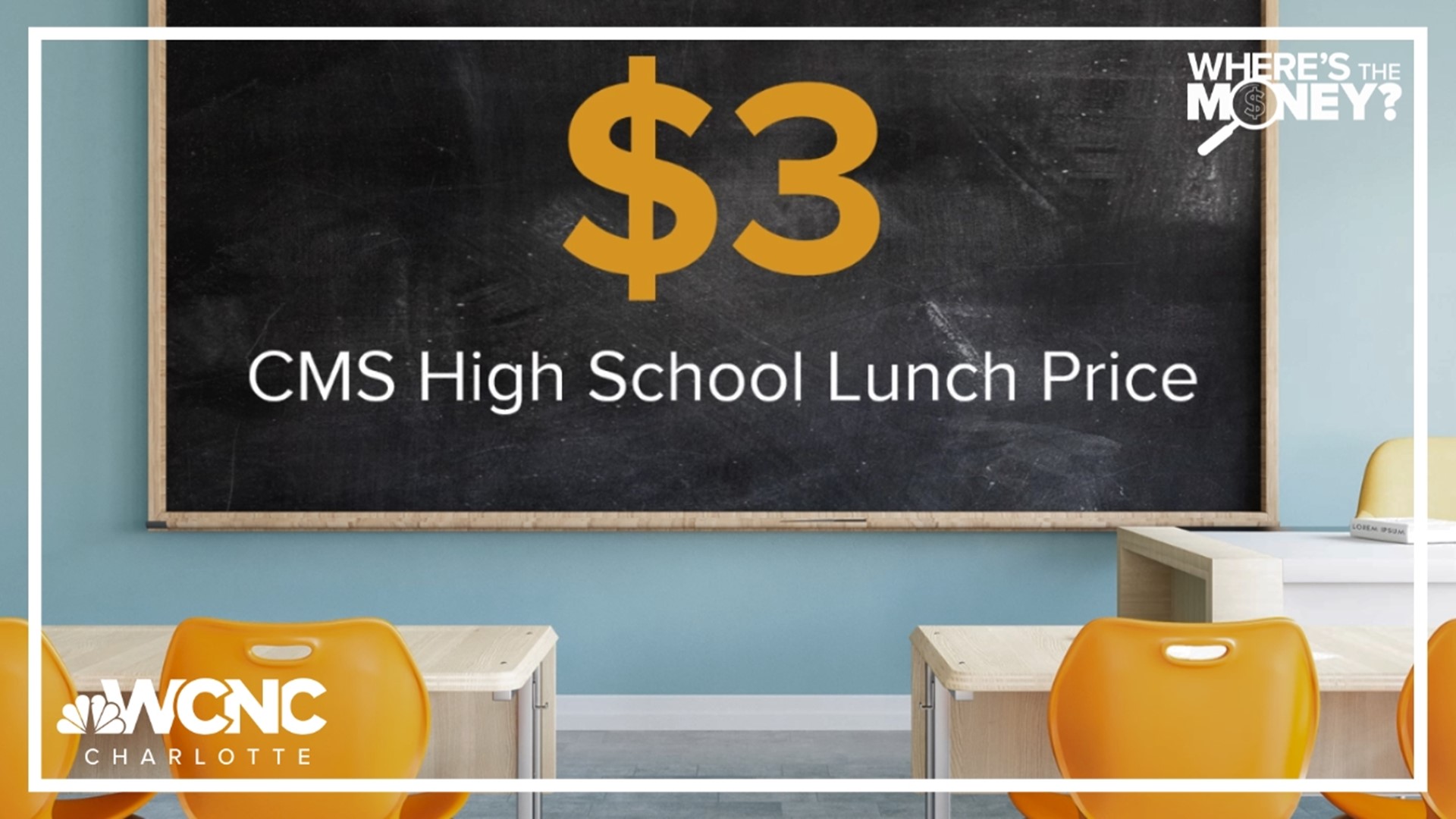MECKLENBURG COUNTY, N.C. — School may be the only place some students get a healthy balanced meal all day.
"We are concerned with the health and safety and well-being of all of our students," CMS superintendent Crystal Hill said. "And so it's really important for all students to have a healthy breakfast and lunch."
At CMS, all students get free breakfast. Lunch costs vary from elementary to high school, but it can cost up to $3 a day unless a student qualifies for free or reduced lunch.
"There are many families out there who just don't quite qualify for free or reduced-price meals but are still struggling to feed their families given the high cost of food," Diane Pratt-Heavner, School Nutrition Association spokesperson, said.
The School Nutrition Association has long advocated for all states to have universal school meals for every child.
During the pandemic, schools offered free lunches to all students, but that’s not the case anymore after Congress didn’t renew a waiver that gave students free lunches during the pandemic.
"If we want kids to do well in the classroom, we need to make sure they're not hungry and distractible, we need to make sure that they're getting meals," Pratt-Heavner said.
In the recently passed North Carolina budget, some relief could come to both families and school districts. State money is budgeted to cover the cost of a reduced-price school meal for families who don’t qualify for a free meal, according to federal poverty standards.
This change would make tens of thousands of students eligible for free meals instead of just reduced-price ones.
What do those families look like?
One example, a family of three with a household income of $45,991 a year or less would qualify for reduced lunch.
"With more students to be able to get free lunch, it's extremely important," Hill said. "We know that health and nutrition are really important for our brains to work."
CMS is starting to review the state budget so it’s not clear exactly how many students from the district this would impact. The district said as of last school year almost 14,000 students had unpaid lunch balances last year totaling $447,073.67.
"CMS is always searching for grants and business partners to assist with mitigating the debt. Students who have debt generally do not have the financial resources to make payments," a CMS spokesperson said.
Under the new state budget, schools would also get an incentive for enrolling their schools into the federal Community Eligibility Provision program. The CEP program allows schools with enough lower-income families to have free school meals for all children. Families with students in schools enrolled in the CEP program don't have to fill out the free and reduced lunch forms.
CMS, a district with a high concentration of poverty, compared to other North Carolina districts currently currently has 111 schools enrolled as a CEP school.
Districts must apply to receive the extra state benefits.
Contact Shamarria Morrison at smorrison@wcnc.com and follow her on Facebook, X and Instagram.
WCNC Charlotte is always asking "where's the money?" If you need help, reach out to WCNC Charlotte by emailing money@wcnc.com.
WCNC Charlotte's Where's The Money series is all about leveling the playing in the Carolinas by helping others and breaking down barriers. WCNC Charlotte doesn't want our viewers to be taken advantage of, so we’re here to help. Watch previous stories where we ask the question “Where’s the Money” in the YouTube playlist below and subscribe to get updated when new videos are uploaded.

